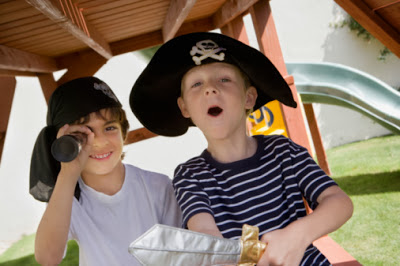

| Visitors Now: | |
| Total Visits: | |
| Total Stories: |

| Story Views | |
| Now: | |
| Last Hour: | |
| Last 24 Hours: | |
| Total: | |
How five-year-olds build imaginary worlds together
I remember, aged five or so, a friend and I were the cool police motorcyclists from the TV show CHiPs. Our props were limited to the usual paraphernalia of a suburban home and yet somehow both of us knew when the other person was on foot or on his Kawasaki motorbike, which routes through the house were motorways, where the baddies were located, and most important, we both understood the plot of our game.
For a new study, a team of psychologists in Australia has taken an interest in the conversation that allows this kind of coordinated imaginary game-play between childhood friends. Frances Hoyte and her colleagues video recorded three boys aged five to six – Alan, Bradley, and Max – as they played with each other in pairs for half an hour. Alan and Bradley had previously identified each other as being “very best friends”, as had Bradley and Max. Alan and Max were “just a little bit friends.”
Each pairing from this trio was asked to play together with various props available to help them on their way, including brightly coloured building blocks, wooden discs, bottle tops and pebbles. The toys were chosen deliberately to be open-ended, “so that the materials did not prescribe a specific agenda for play.”
Hoyte’s team identified three conversational themes in the boys’ playtime interactions. The first, found in the conversations in all three pairs, the researchers called “making together”. “The goal of the first talk type,” the researchers said, “was to co-construct a representation of some real or imaginary object.”
The second kind of talk – “sharing personal information” – was only found between the pairs of boys who were best friends. The final talk type – “storytelling” – was also found only between best friends and involved the boys bringing a fictional scenario to life. In one, Alan and Bradley blasted off into space together in a rocket. Sometimes events are described in the third person, other times the children assume the character roles themselves:
Bradley: They breathe out fire out their um shoes
Alan: There we go (noise effects)
Bradley: And then off they go
Bradley: They keep on burning their feet
Alan: Yeah
Bradley: And they don’t say “ow”
Another story these boys concocted together appeared to involve shooting their entire family. The researchers chose not to dwell on the disturbing content of this particular game and focused instead on the common features of joint imaginary play, including: negotiation, sharing of power and control, and frequent use of declaratives and imperatives, and mental process verbs such as “think,” “know” and “say”. The researchers observed that: “The children also share a sense of what would be exciting, or appealing to imagine. Possibly, this shared outlook or view of the world underpins their narrative construction and allows them to successfully create the story together.”
Hoyte and her colleagues admitted they really need to study more children and to follow patterns of changing play conversation over time. This way they’ll be able to discover how friendship levels and play influence each other, and also whether joint imaginary play has consequences for language development.
_________________________________ ![]()
Frances Hoyte, Jane Torr, and Sheila Degotardi (2013). The language of friendship: Genre in the conversations of preschool children Journal of Early Childhood Research DOI: 10.1177/1476718X13492941
–Further reading–
Kids with invisible friends have superior narrative skills
Fantasy-prone children struggle to apply lessons from fantasy stories
Background TV disrupts children’s play
Post written by Christian Jarrett (@psych_writer) for the BPS Research Digest.
Source: http://bps-research-digest.blogspot.com/2013/12/how-five-year-olds-build-imaginary.html



